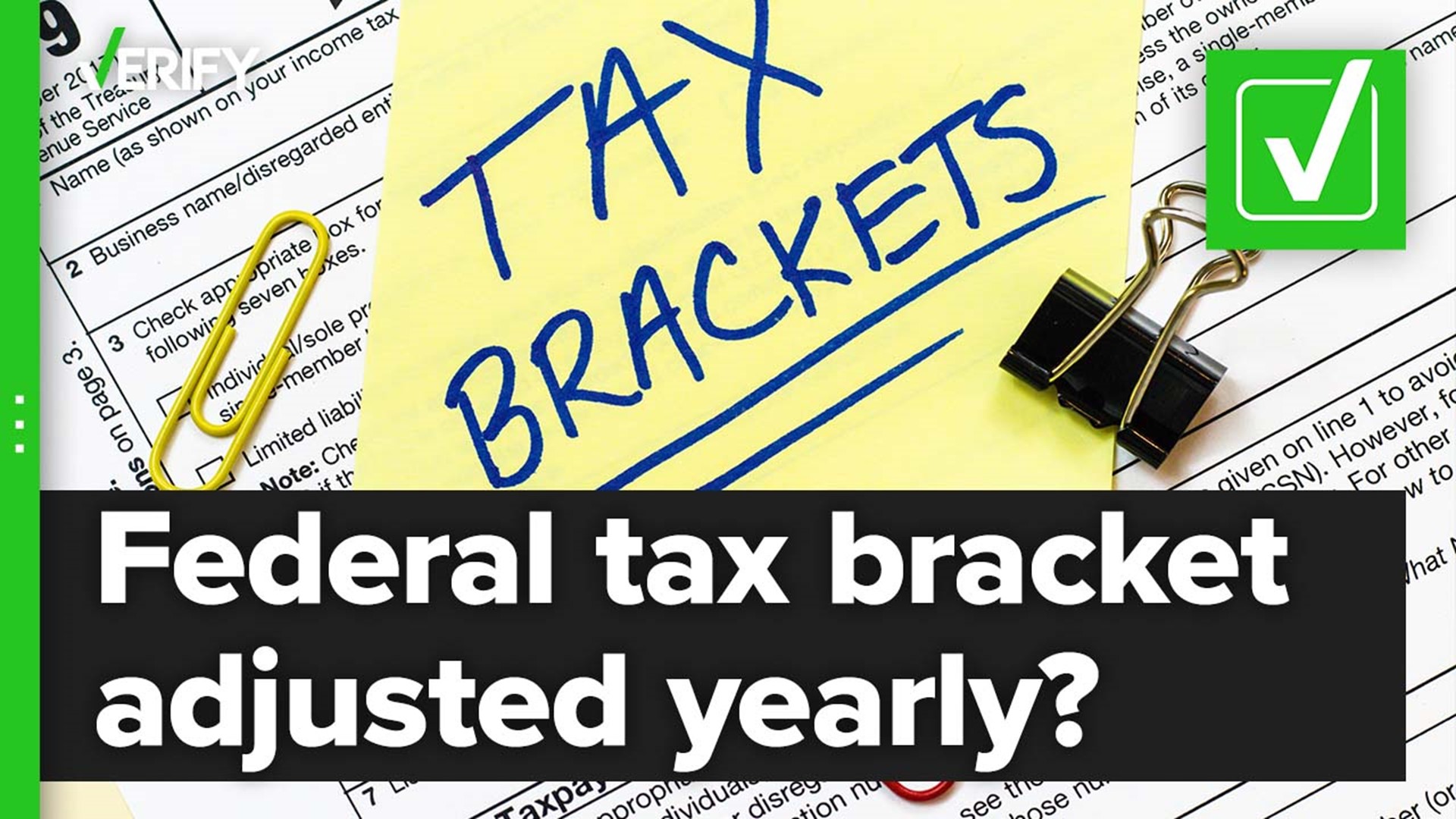The IRS on Nov. 10 announced that it adjusted federal income tax brackets for the 2022 tax year, meaning the changes will impact tax returns filed in 2023.
With inflation currently being the highest it’s been since 1990, the changes made headlines and garnered interest across the country. Google Trends data shows searches for “2022 income tax brackets” spiked after the IRS made the announcement. But is this something the IRS does every year?
THE QUESTION
Does the IRS adjust federal income tax brackets every year?
THE SOURCES
THE ANSWER
Yes, the IRS adjusts federal income tax brackets every year.
WHAT WE FOUND
There are currently seven federal income tax brackets the IRS uses to calculate the percentage of people’s income that will go to taxes each year. Here’s a breakdown of the seven tax brackets the IRS announced for tax year 2022:
- 37% for individual single taxpayers with incomes greater than $539,900 ($647,850 for married couples filing jointly).
- 35% for incomes over $215,950 ($431,900 for married couples filing jointly)
- 32% for incomes over $170,050 ($340,100 for married couples filing jointly)
- 24% for incomes over $89,075 ($178,150 for married couples filing jointly)
- 22% for incomes over $41,775 ($83,550 for married couples filing jointly)
- 12% for incomes over $10,275 ($20,550 for married couples filing jointly)
- 10% for incomes of $10,275 or less ($20,550 for married couples filing jointly)
The income levels for each bracket increased by a little more than 3% for tax year 2022. It’s the largest bump since Congress changed the tax code in 2017 and, for some brackets, the largest jump since 2009 during the height of the Great Recession.
But why does the IRS adjust the tax bracket income levels? It has to do with wages and inflation.
Wages generally increase in the U.S. as do the price of goods, the latter of which is measured by inflation. So, pay raises could push someone into a higher tax bracket, even though their spending power hasn’t actually changed, it’s just matched the price of goods. That’s a phenomenon called “bracket creep,” according to independent tax policy nonprofit the Tax Foundation. And it’s why the IRS makes an annual inflation adjustment to the federal tax brackets.
Instead of using the Bureau of Labor Statistics’ more well-known consumer price index (CPI) to measure inflation, the IRS uses the chained consumer price index (C-CPI). That’s because of a 2017 law that changed the tax code. C-CPI differs slightly in that it takes longer to rise than CPI, according to AARP.
“The chained CPI takes into account the fact that when prices of some items rise, consumers often substitute other items,” AARP says. “If the price of beef rises, for example, people switch to chicken.”
The chained consumer price index increased 6.1% over the last 12 months, according to the Bureau of Labor Statistics. Meanwhile, private average hourly earnings have risen by 4.9% over the last 12 months.
While federal income brackets change annually, the same can’t be said for state income taxes. The Tax Foundation says 15 states and Washington, D.C., do not automatically adjust for inflation.
More from VERIFY: No, a fourth stimulus check has not been passed

